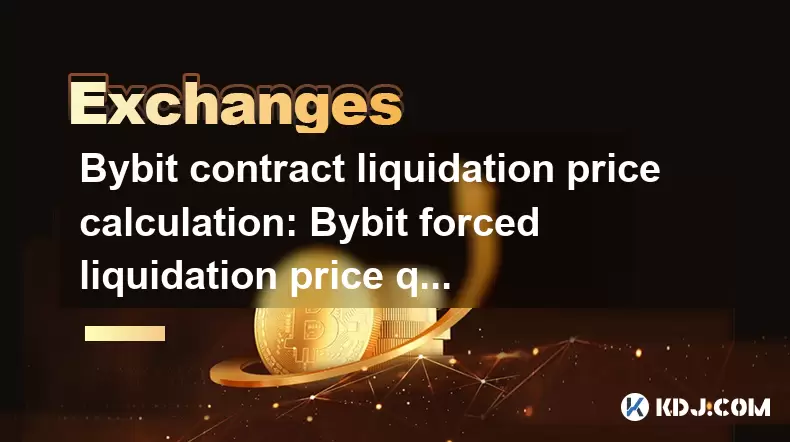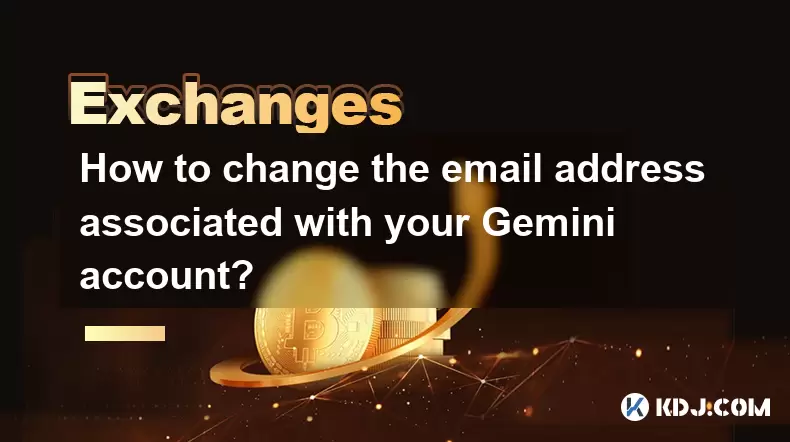-
 Bitcoin
Bitcoin $114200
0.00% -
 Ethereum
Ethereum $3637
0.56% -
 XRP
XRP $2.950
-2.01% -
 Tether USDt
Tether USDt $0.9999
0.02% -
 BNB
BNB $761.0
0.55% -
 Solana
Solana $164.1
-1.38% -
 USDC
USDC $0.9999
0.02% -
 TRON
TRON $0.3332
0.36% -
 Dogecoin
Dogecoin $0.2012
-0.52% -
 Cardano
Cardano $0.7261
-1.41% -
 Hyperliquid
Hyperliquid $37.62
-2.13% -
 Stellar
Stellar $0.3930
-2.65% -
 Sui
Sui $3.441
-0.16% -
 Bitcoin Cash
Bitcoin Cash $563.8
0.70% -
 Chainlink
Chainlink $16.50
0.09% -
 Hedera
Hedera $0.2424
-0.14% -
 Ethena USDe
Ethena USDe $1.001
0.01% -
 Avalanche
Avalanche $22.20
0.00% -
 Litecoin
Litecoin $118.0
-2.48% -
 UNUS SED LEO
UNUS SED LEO $8.991
0.12% -
 Toncoin
Toncoin $3.195
-3.87% -
 Shiba Inu
Shiba Inu $0.00001217
0.12% -
 Uniswap
Uniswap $9.674
-0.21% -
 Polkadot
Polkadot $3.633
1.00% -
 Monero
Monero $295.3
-0.82% -
 Dai
Dai $0.9999
0.00% -
 Bitget Token
Bitget Token $4.321
-0.41% -
 Cronos
Cronos $0.1392
0.73% -
 Pepe
Pepe $0.00001027
-0.89% -
 Aave
Aave $258.5
0.32%
Bybit contract liquidation price calculation: Bybit forced liquidation price query method
Bybit's liquidation price, crucial for risk management, depends on entry price, position size, leverage, and maintenance margin; traders can query it via the platform's trading page.
Jun 07, 2025 at 02:49 am

Bybit is a popular cryptocurrency derivatives exchange that offers various trading products, including perpetual contracts. Understanding how liquidation prices are calculated and how to query forced liquidation prices is crucial for traders to manage their positions effectively. This article will delve into the detailed mechanics of Bybit contract liquidation price calculation and provide a step-by-step guide on how to query forced liquidation prices.
Understanding Bybit Contract Liquidation Price
The liquidation price on Bybit is the price at which a trader's position is forcibly closed due to insufficient margin. This mechanism is in place to protect both the trader and the exchange from excessive losses. The calculation of the liquidation price depends on several factors, including the entry price, position size, leverage, and the maintenance margin rate.
The liquidation price for a long position can be calculated using the following formula:
[ \text{Liquidation Price}_{\text{long}} = \frac{\text{Entry Price} \times \text{Position Size} \times \text{Leverage}}{\text{Position Size} \times \text{Leverage} + \text{Maintenance Margin}} ]
The liquidation price for a short position is calculated as follows:
[ \text{Liquidation Price}_{\text{short}} = \frac{\text{Entry Price} \times \text{Position Size} \times \text{Leverage}}{\text{Position Size} \times \text{Leverage} - \text{Maintenance Margin}} ]
Factors Affecting Liquidation Price
Several factors influence the liquidation price on Bybit, and understanding these can help traders manage their risk better.
- Entry Price: The price at which the position was opened.
- Position Size: The total amount of the asset being traded.
- Leverage: The ratio of the trader's funds to the size of the borrowed funds.
- Maintenance Margin: The minimum amount of margin required to keep the position open.
Traders must keep an eye on these variables as changes in any of them can affect the liquidation price.
Bybit Forced Liquidation Price Query Method
To effectively manage their positions, traders need to know how to query the forced liquidation price on Bybit. Here is a detailed guide on how to do this:
- Log into Bybit: Start by logging into your Bybit account.
- Navigate to the Trading Page: Once logged in, go to the trading page for the specific contract you are interested in.
- Open Position Details: Click on the position you want to check the liquidation price for. This will open a detailed view of your position.
- Check Liquidation Price: The liquidation price will be displayed in the position details. It is usually found under the "Position" or "Order" section.
By following these steps, traders can easily access the forced liquidation price for their positions.
Practical Example of Liquidation Price Calculation
Let's consider a practical example to illustrate how to calculate the liquidation price for a Bybit contract.
Suppose a trader opens a long position with the following parameters:
- Entry Price: $10,000
- Position Size: 1 BTC
- Leverage: 10x
- Maintenance Margin: $500
Using the formula for a long position:
[ \text{Liquidation Price}_{\text{long}} = \frac{10,000 \times 1 \times 10}{1 \times 10 + 500} = \frac{100,000}{1,000 + 500} = \frac{100,000}{1,500} \approx 6,666.67 ]
So, the liquidation price for this long position would be approximately $6,666.67.
Importance of Monitoring Liquidation Price
Monitoring the liquidation price is crucial for traders to avoid unexpected liquidations. Here are some reasons why it's important:
- Risk Management: Knowing the liquidation price helps traders set stop-loss orders to manage their risk effectively.
- Position Sizing: Traders can adjust their position size and leverage based on the liquidation price to ensure they have enough margin.
- Market Volatility: During high volatility, prices can move quickly, and understanding the liquidation price can help traders react promptly.
By keeping a close eye on the liquidation price, traders can make informed decisions and protect their investments.
Adjusting Positions to Avoid Liquidation
If the market moves against a trader's position, they might need to adjust their position to avoid liquidation. Here are some strategies to consider:
- Add More Margin: Increasing the margin can raise the liquidation price and give the trader more room for the market to move.
- Reduce Position Size: Decreasing the position size can also help increase the liquidation price.
- Close Part of the Position: Closing a portion of the position can reduce the risk of liquidation.
By using these strategies, traders can manage their positions more effectively and avoid forced liquidations.
Bybit's Auto-Deleveraging System
Bybit employs an Auto-Deleveraging (ADL) system to handle situations where the market moves quickly, and liquidations cannot be processed in time. The ADL system ensures that the exchange can maintain order and fairness in the market.
- ADL Priority: Traders with the highest profit are the first to be auto-deleveraged.
- Notification: Traders are notified if they are at risk of being auto-deleveraged.
- Impact on Liquidation Price: The ADL system can affect the liquidation price, so traders need to be aware of this mechanism.
Understanding the ADL system can help traders better manage their positions and expectations during volatile market conditions.
Frequently Asked Questions
Q1: Can I change the liquidation price after opening a position on Bybit?
A1: The liquidation price is determined by the factors mentioned earlier (entry price, position size, leverage, and maintenance margin). While you cannot directly change the liquidation price, you can influence it by adjusting your position size, adding more margin, or changing your leverage.
Q2: What happens if the market price reaches my liquidation price on Bybit?
A2: If the market price reaches your liquidation price, Bybit will automatically close your position to prevent further losses. This process is called forced liquidation, and it ensures that the exchange can manage risk effectively.
Q3: How often should I check my liquidation price on Bybit?
A3: It is advisable to check your liquidation price regularly, especially during periods of high market volatility. Monitoring your liquidation price can help you make timely adjustments to your position and avoid unexpected liquidations.
Q4: Does Bybit charge any fees for forced liquidations?
A4: Bybit does not charge any additional fees for forced liquidations. However, any unrealized losses at the time of liquidation will be realized, and the position will be closed at the current market price.
Disclaimer:info@kdj.com
The information provided is not trading advice. kdj.com does not assume any responsibility for any investments made based on the information provided in this article. Cryptocurrencies are highly volatile and it is highly recommended that you invest with caution after thorough research!
If you believe that the content used on this website infringes your copyright, please contact us immediately (info@kdj.com) and we will delete it promptly.
- Ethereum, Transaction Volumes, and SEC Staking: Navigating the Regulatory Landscape
- 2025-08-06 22:30:13
- Crypto, Tokens, and Metrics: Navigating the New Frontier
- 2025-08-06 23:09:22
- Crypto Market Buzz: PROVE Surges as Coinbase, Binance List Token
- 2025-08-06 22:30:13
- BlockDAG, Crypto, and Binance Coin: The Hottest Trends You Can't Ignore
- 2025-08-06 23:50:13
- BlockSack Who? Base Network and Layer 2s Shake Up the Crypto Scene
- 2025-08-06 23:10:13
- DOGE, SHIB, and Remittix ROI: Shifting Sands in the Crypto Landscape
- 2025-08-06 23:50:13
Related knowledge

How to set and manage alerts on the Gemini app?
Aug 03,2025 at 11:00am
Understanding the Gemini App Alert SystemThe Gemini app offers users a powerful way to stay informed about their cryptocurrency holdings, price moveme...

How to use the Gemini mobile app to trade on the go?
Aug 04,2025 at 09:14am
Setting Up the Gemini Mobile AppTo begin trading on the go using the Gemini mobile app, the first step is installing the application on your smartphon...

How to set up a corporate account on Gemini?
Aug 05,2025 at 03:29pm
Understanding Gemini Corporate AccountsGemini is a regulated cryptocurrency exchange platform that supports both individual and corporate account crea...

How to change the email address associated with your Gemini account?
Aug 06,2025 at 08:49pm
Understanding the Importance of Updating Your Email on GeminiYour email address serves as a primary identifier and communication channel for your Gemi...

What to do if you forgot your Gemini password?
Aug 04,2025 at 03:42am
Understanding the Role of Passwords in Gemini AccountsWhen using Gemini, a regulated cryptocurrency exchange platform, your password serves as one of ...

What are the websocket feeds available from the Gemini API?
Aug 03,2025 at 07:43pm
Overview of Gemini WebSocket FeedsThe Gemini API provides real-time market data through its WebSocket feeds, enabling developers and traders to receiv...

How to set and manage alerts on the Gemini app?
Aug 03,2025 at 11:00am
Understanding the Gemini App Alert SystemThe Gemini app offers users a powerful way to stay informed about their cryptocurrency holdings, price moveme...

How to use the Gemini mobile app to trade on the go?
Aug 04,2025 at 09:14am
Setting Up the Gemini Mobile AppTo begin trading on the go using the Gemini mobile app, the first step is installing the application on your smartphon...

How to set up a corporate account on Gemini?
Aug 05,2025 at 03:29pm
Understanding Gemini Corporate AccountsGemini is a regulated cryptocurrency exchange platform that supports both individual and corporate account crea...

How to change the email address associated with your Gemini account?
Aug 06,2025 at 08:49pm
Understanding the Importance of Updating Your Email on GeminiYour email address serves as a primary identifier and communication channel for your Gemi...

What to do if you forgot your Gemini password?
Aug 04,2025 at 03:42am
Understanding the Role of Passwords in Gemini AccountsWhen using Gemini, a regulated cryptocurrency exchange platform, your password serves as one of ...

What are the websocket feeds available from the Gemini API?
Aug 03,2025 at 07:43pm
Overview of Gemini WebSocket FeedsThe Gemini API provides real-time market data through its WebSocket feeds, enabling developers and traders to receiv...
See all articles

























































































